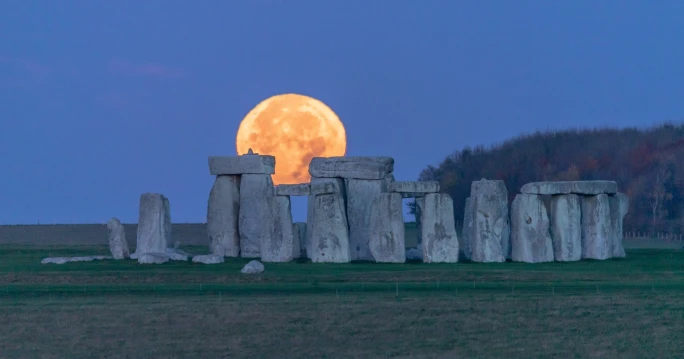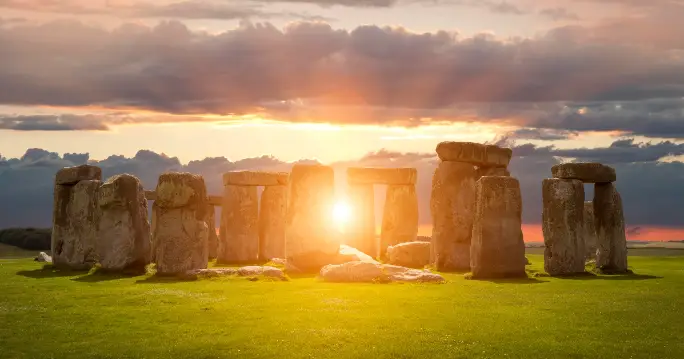Stonehenge: The Ancient Monument and Word Heritage Site
Stonehenge, a world heritage site renowned for its awe-inspiring ancient monument, stands as one of Britain’s most iconic landmarks. Located on the Salisbury Plain in Wiltshire, England, this prehistoric stone circle has captivated historians, archaeologists, and visitors for centuries. Its massive, precisely arranged stones offer a glimpse into the advanced engineering and ceremonial practices of the ancient societies.
Stonehenge, dating back over 4,000 years, stands as one of the most intriguing ancient monuments in the world. This Neolithic structure took shape over several centuries. Archaeologists believe various prehistoric communities built the stone circle over time. Researchers continue to explore and debate the exact origins of this fascinating monument.
How The Stone Circle Aligns with Celestial Solstices
Stonehenge, built over 4,000 years ago, captivates visitors with its solstice alignment. The summer solstices sunrise and winter solstice sunset perfectly align with the stone circle. People flock to experience this celestial event each year. This alignment highlights the advanced astronomical knowledge of the builders of the ancient monument.

Stonehenge Unveiled: 8 Facts About Its Ancient Construction and Stone Types
- Ancient Construction: Built over about 1,500 years, began around 3000 BCE and concluded around 2000 BCE.
- Stone Types: The monument includes large sarsen stones and smaller bluestones. Builders transported sarsens from 20 miles away and bluestones from 150 miles in Wales.
- Astronomical Alignment: Stonehenge aligns precisely with the summer and winter solstices. The stone circle marks the sunrise on the summer solstices and the sunset on the winter solstices.
- Construction Methods: Builders likely used wooden sledges, rollers, and levers to move and erect the massive stones.
- Cultural Significance: Stonehenge likely served as a ceremonial or religious site. Its layout and alignments suggest it had significant astronomical and ritualistic roles.
- UNESCO World Heritage Site: Designated in 1986, Stonehenge is recognized globally for its cultural and historical importance.
- Ongoing Research: Despite extensive studies, Stonehenge’s construction and purpose remain partially mysterious, with researchers continuing to explore its origins.
- Visitor Experience: Today, Wiltshire, Stonehenge attracts tourists worldwide, who come to explore its history and witness its solstice alignments.
